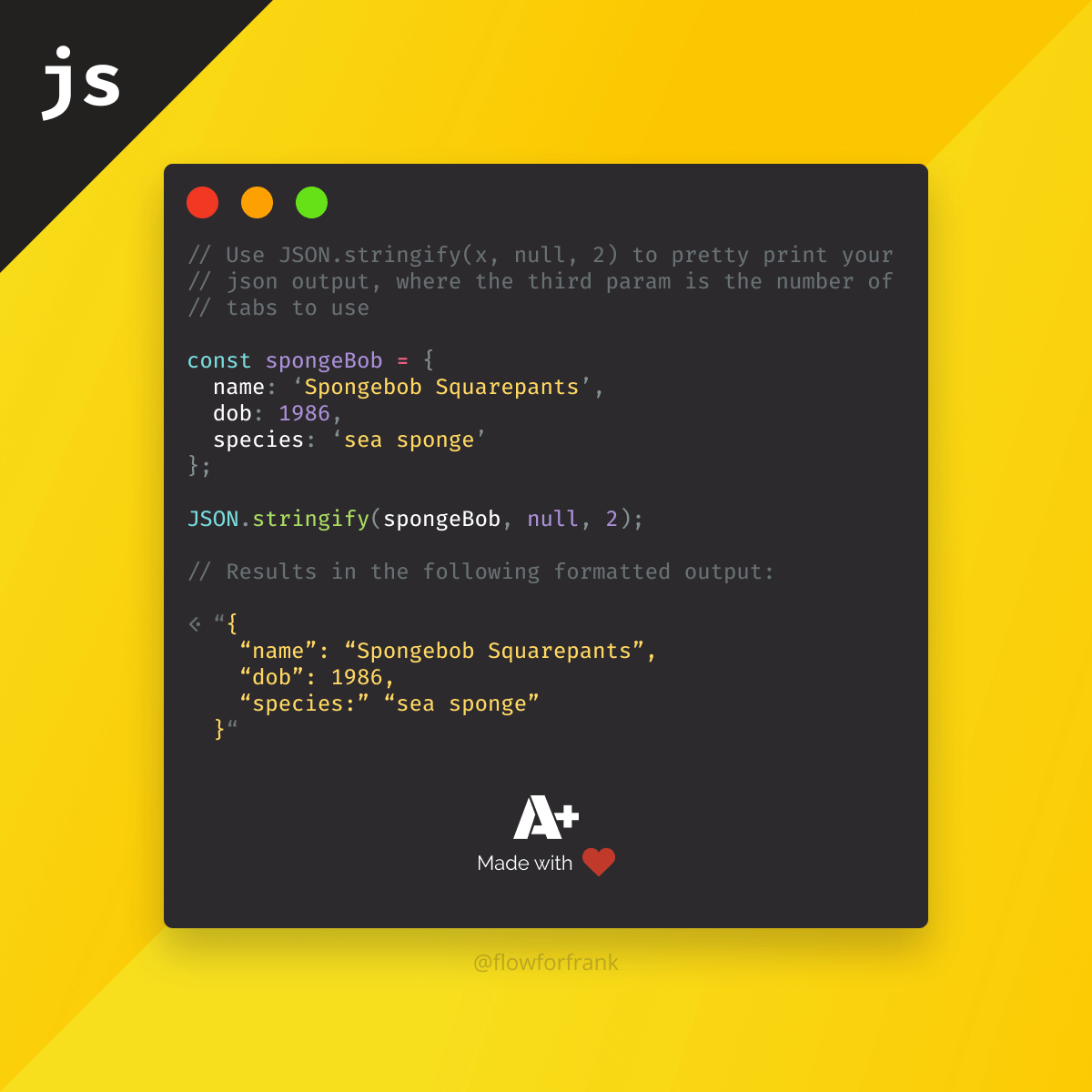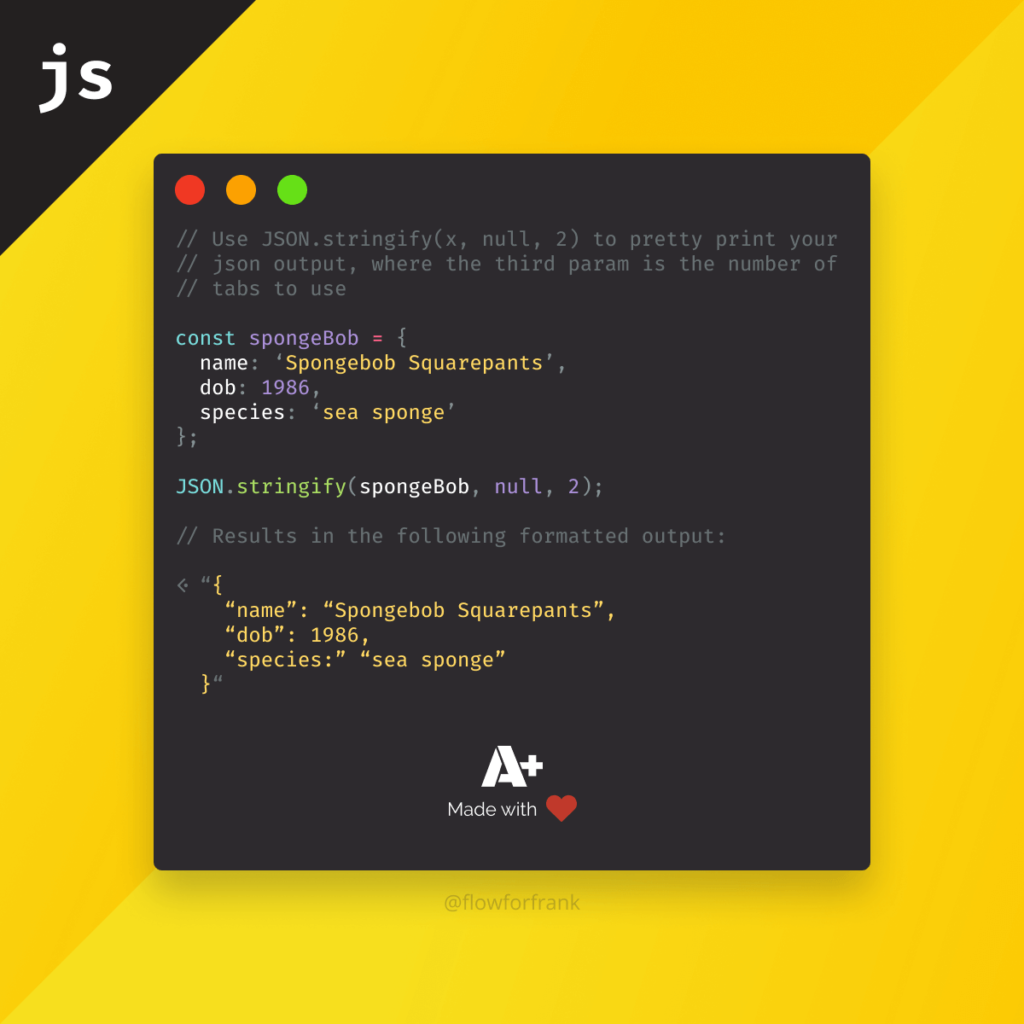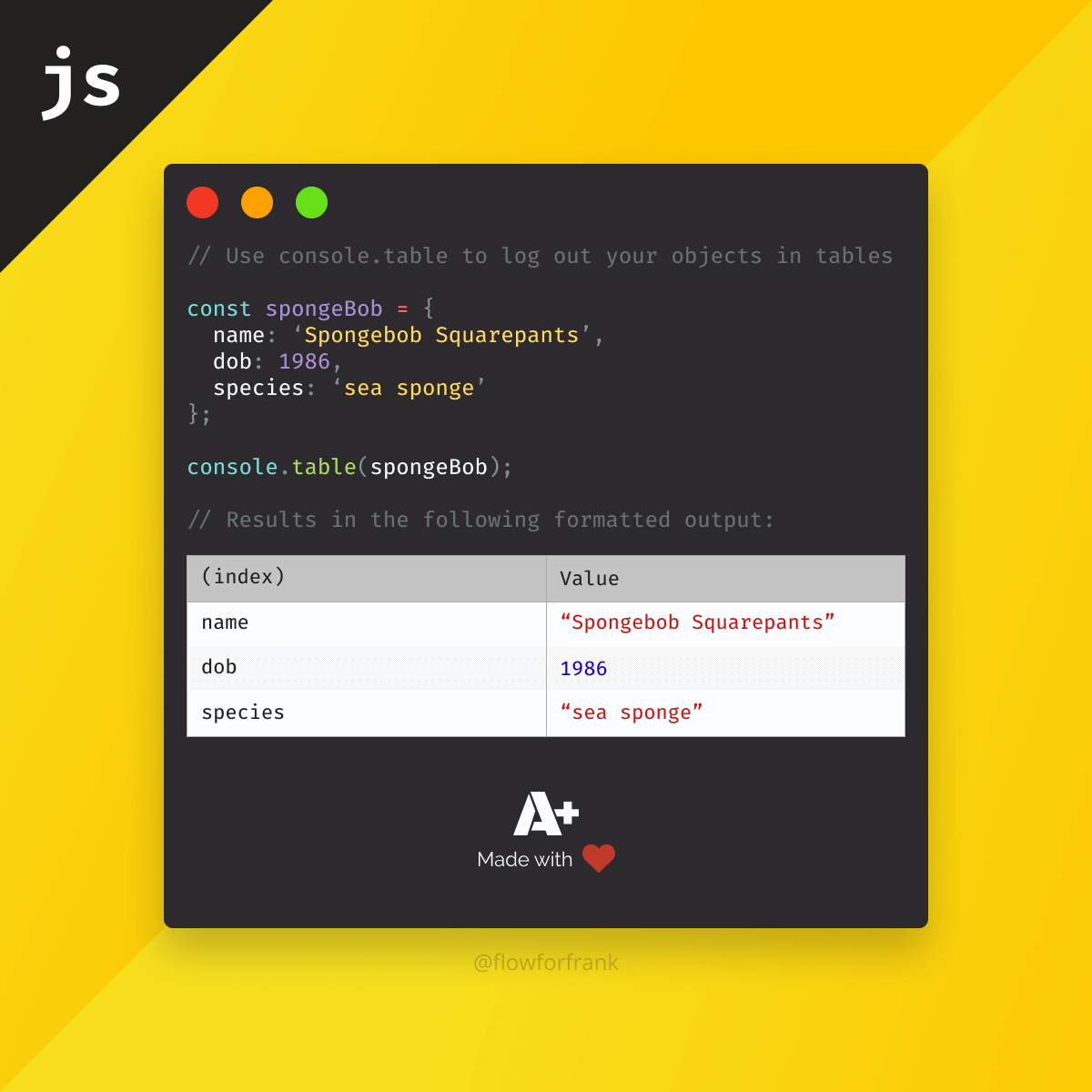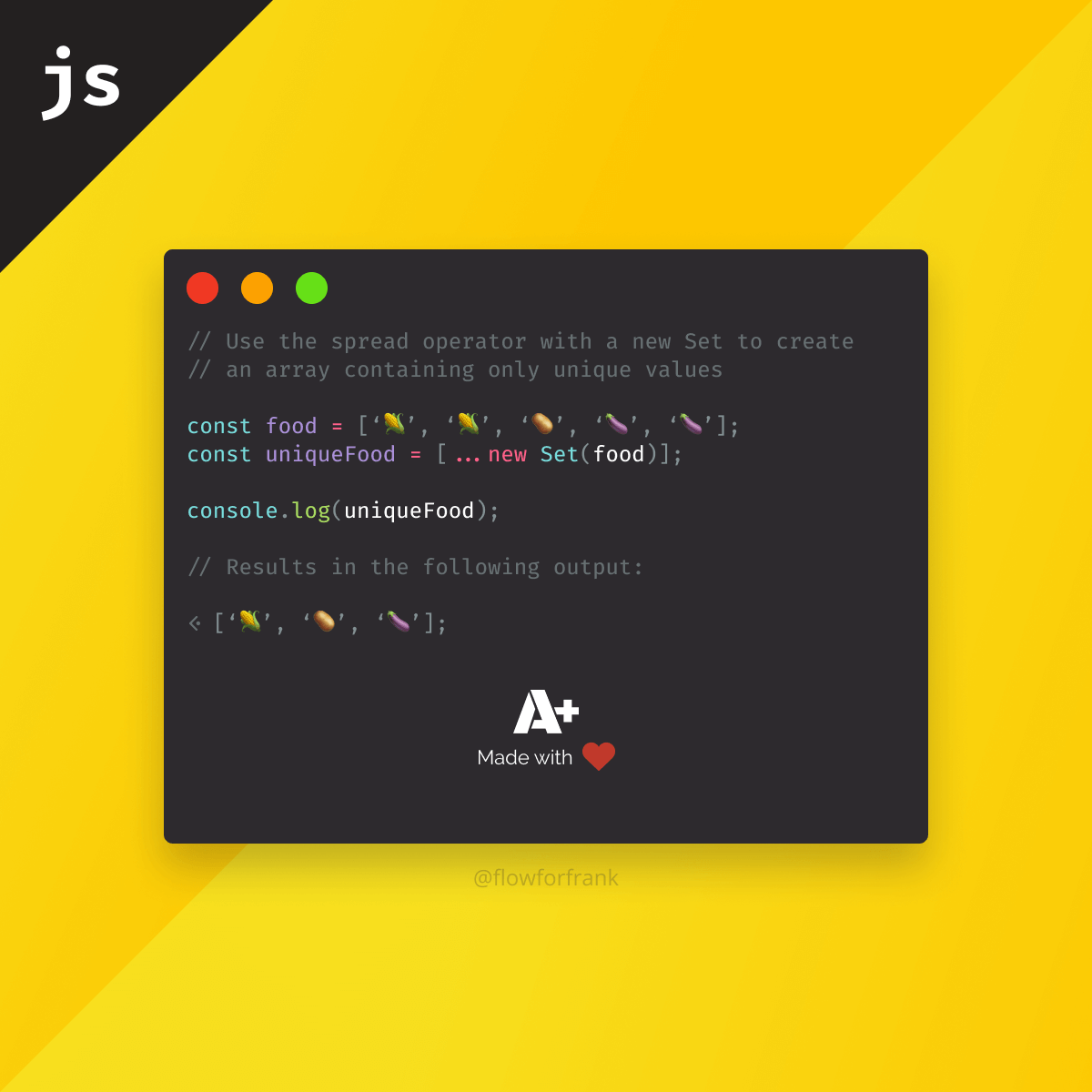
How To Format JSON in JavaScript
Ever had trouble getting through a JSON output during debug? You can use JSON.strinigfy with the number of spaces to use, passed as a 3rd parameter🙌
But what is the second parameter then? Usually you pass null, like so:
JSON.stringify(json, null, 2);Examples
Let's see a couple of examples to break down what each param means:
const json = {
name: 'Spongebob Squarepants',
dob: 1986,
species: 'sea sponge'
};
// JSON.stringify without any optional params
JSON.stringify(json);
// Outputs:
// "{"name":"Spongebob Squarepants","dob":1986,"species":"sea sponge"}"
// JSON.stringify with optional params
JSON.stringify(json, null, 2);
// Outputs a formatted structure with 2 spaces:
// "{
// "name": "Spongebob Squarepants",
// "dob": 1986,
// "species": "sea sponge"
// }"What is the Purpose of Params?
JSON.stringify accepts 3 params. The first one is your data that you want to stringify. The other two are more interesting:
JSON.stringify(value, replacer, space);replacer: This is a function that you can use to change the stringification process. Instead of a function, you can also use an array to define which properties should be included in the result.space: A string or number representing the number of spaces used for formatting the output.

The replacer Function
const json = {
name: 'Spongebob Squarepants',
dob: 1986,
species: 'sea sponge'
};
// Replacer function used for filtering
const replacer = (key, value) => typeof value === 'string' ? undefined : value;
JSON.stringify(json, replacer , 2);
// Outputs a filtered version of `json`:
// "{
// "dob": 1986
// }"
// Replacer function used as whitelist
JSON.stringify(json, ['name', 'species'], 2);
// Outputs a filtered version of `json`:
// "{
// "name": "Spongebob Squarepants",
// "species": "sea sponge"
// }"In the first example, the function filters out everything from the object that is a string. Only dob is left. In the second example, we've specified a list of properties we want to keep. The others al filtered out.
Now you know everything about JSON.stringify. Do you know other tricks that can help debugging? Let us know in the comments!

Resource

Rocket Launch Your Career
Speed up your learning progress with our mentorship program. Join as a mentee to unlock the full potential of Webtips and get a personalized learning experience by experts to master the following frontend technologies:





